
Animal
15:44, 24-May-2019
Invisible lives: The hermaphrodite salp
By Li Yunqi
00:23
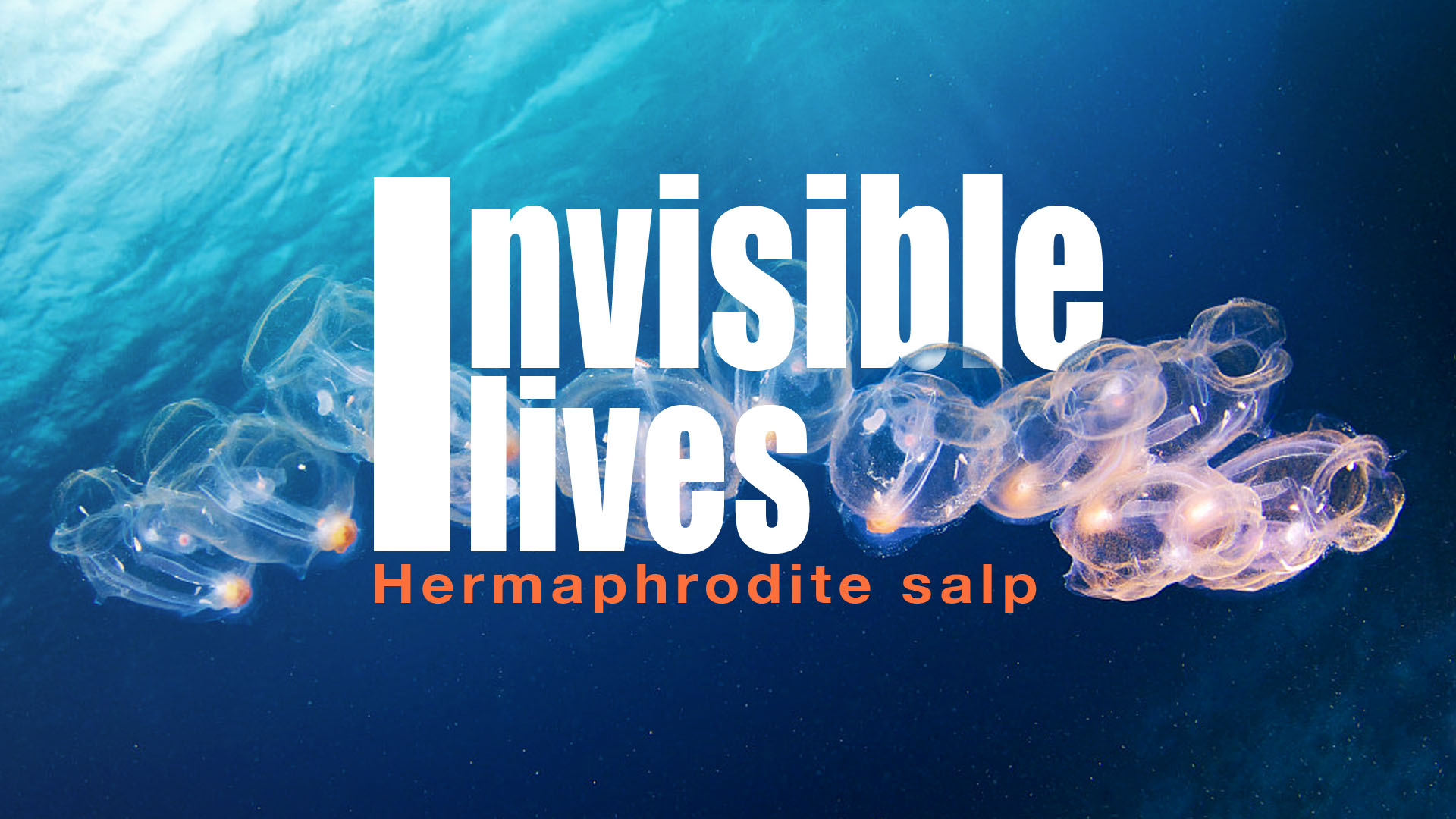
Among the diversity of marine life, there's a transparent, gelatinous and knuckle-size glob that is often mistaken for a jellyfish. Sometimes referred to as "jellyfish eggs," these tubular creatures are called salps.
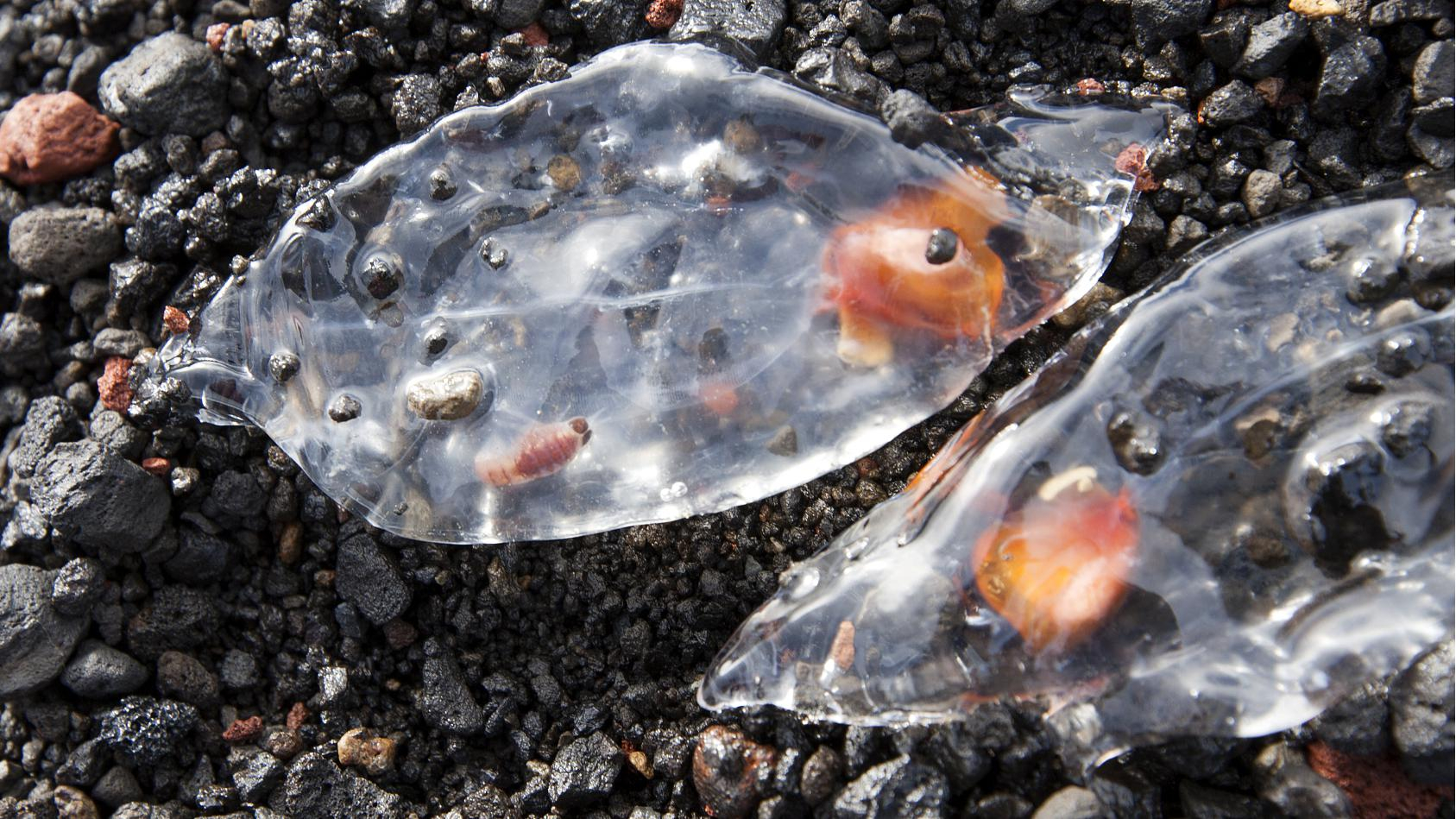
Salps are transparent and gelatinous. /VCG Photo
Salps are transparent and gelatinous. /VCG Photo
Salps are small and harmless planktonic marine invertebrates. It has nothing in common with the jellyfish other than floating around in the ocean.
Their barrel-shape bodies allow them to pump water through them in order to move. Small phytoplankton, their major food, will also be filtered and consumed in this process.
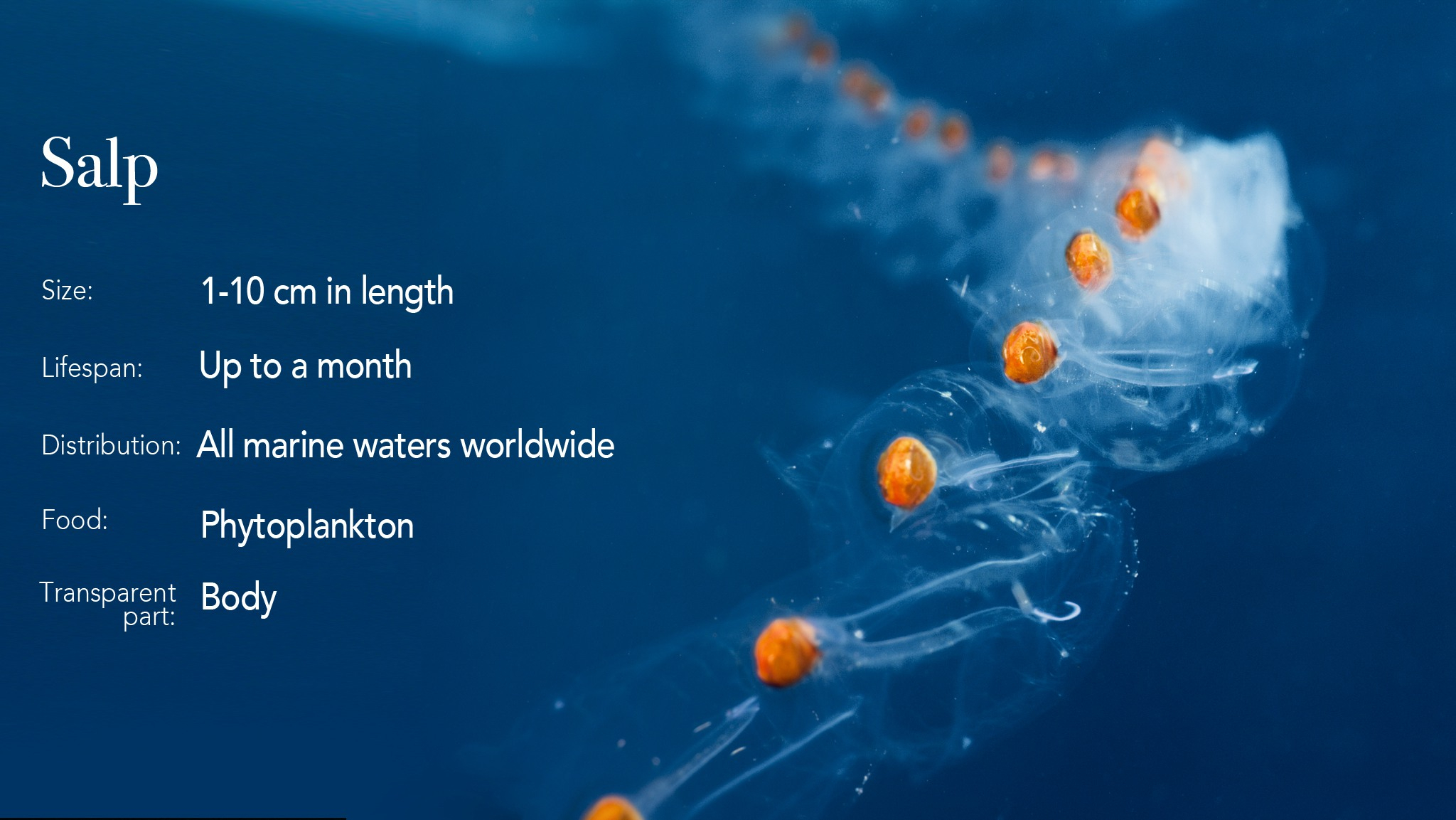
General information about salps. /CGTN Graphic
General information about salps. /CGTN Graphic
Asexual and sexual
One interesting fact about salps is that they are born female, and become male later in life, and then turn back to female. The life of a salp is divided into two phases: the solitary phase and the colonial chain phase.
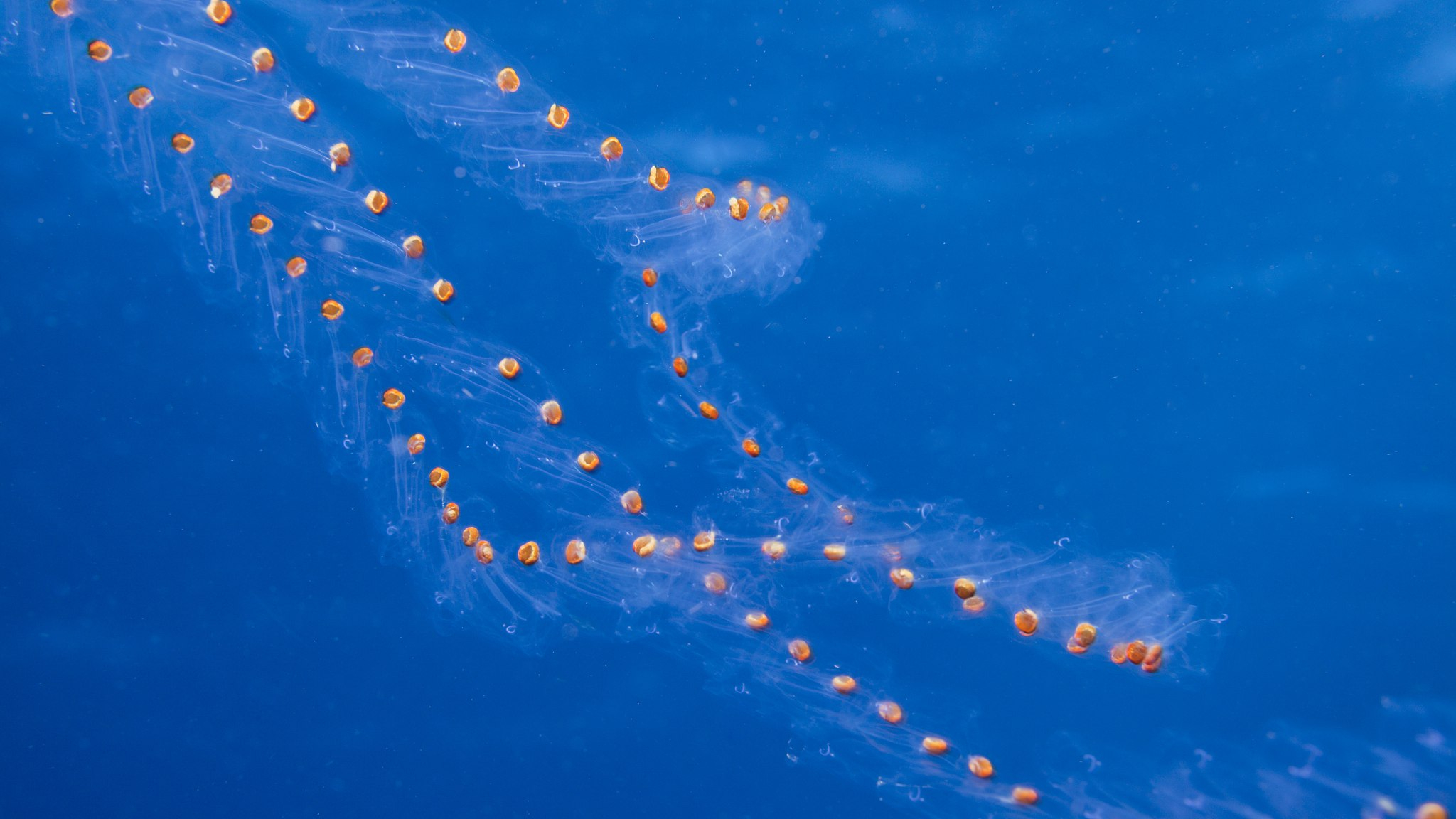
Some species of salps form helix-shape chains. /VCG Photo
Some species of salps form helix-shape chains. /VCG Photo
During its solitary phase, the salp reproduces asexually by creating a chain of hundreds of small individuals that can reach up to 15 meters long.
The chain phase is the most complex part of a salp's life. All the aggregated individuals in the chain are females, and they will be fertilized by a previous generation of males. The fertilized embryos will be released out of the chain and become solitary again, while the mother aggregated individuals turn to male and wait for the next round of fertilization.
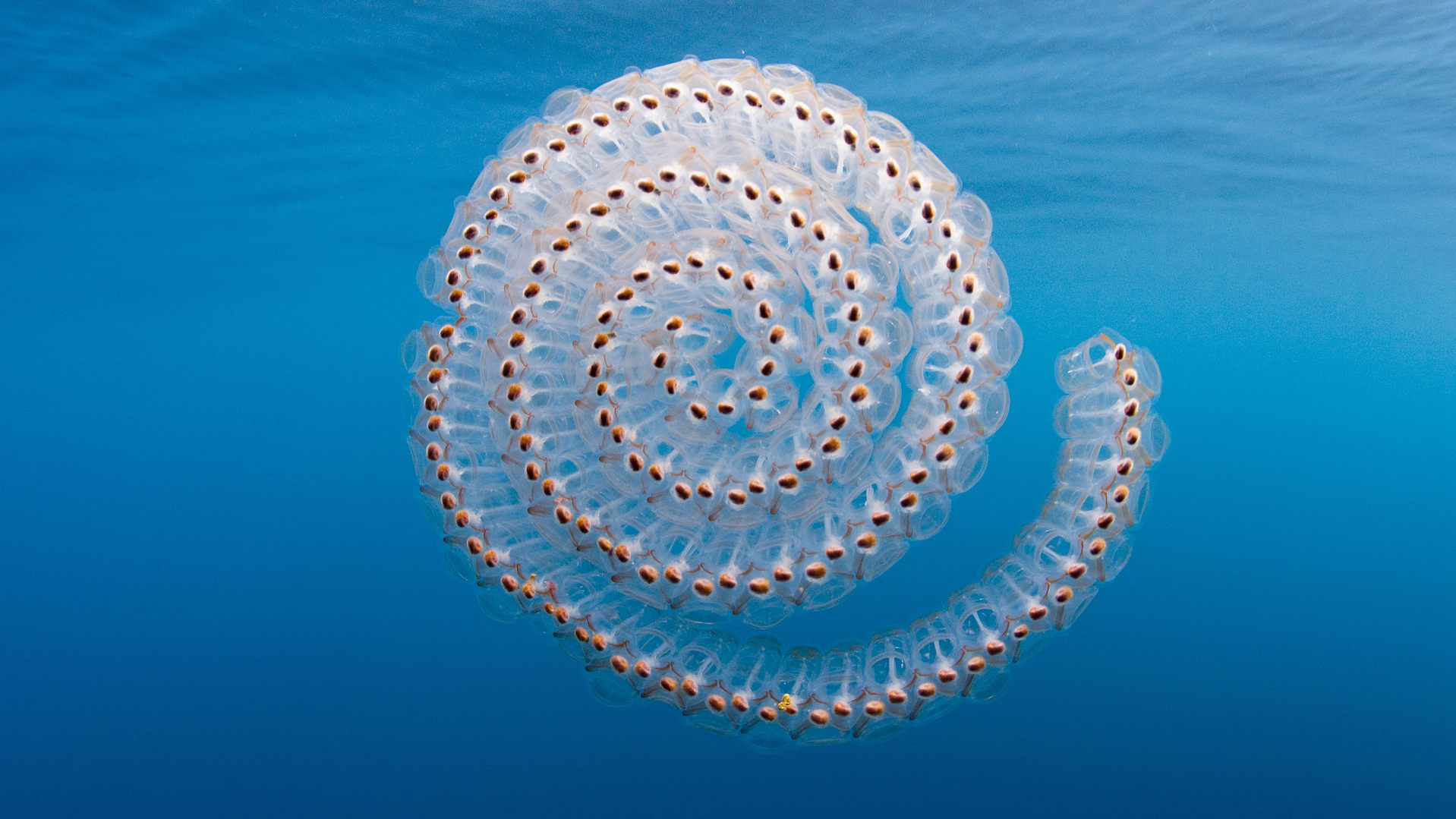
Some species of salps form wheel-shape chains. /VCG Photo
Some species of salps form wheel-shape chains. /VCG Photo
This complicated life cycle often takes place within 48 hours; some species can live up to one month.
The global cleaner that removes carbon
Salps feed on phytoplankton like algae, which have absorbed a large amount of dissolved carbon dioxide (CO2) in the ocean. This means that carbon will accumulate in the bodies of salps. Because of their rapid reproduction process and short life cycles, excrement and dead salps will sink to the bottom of the ocean and thus remove solid carbon from the carbon cycle.
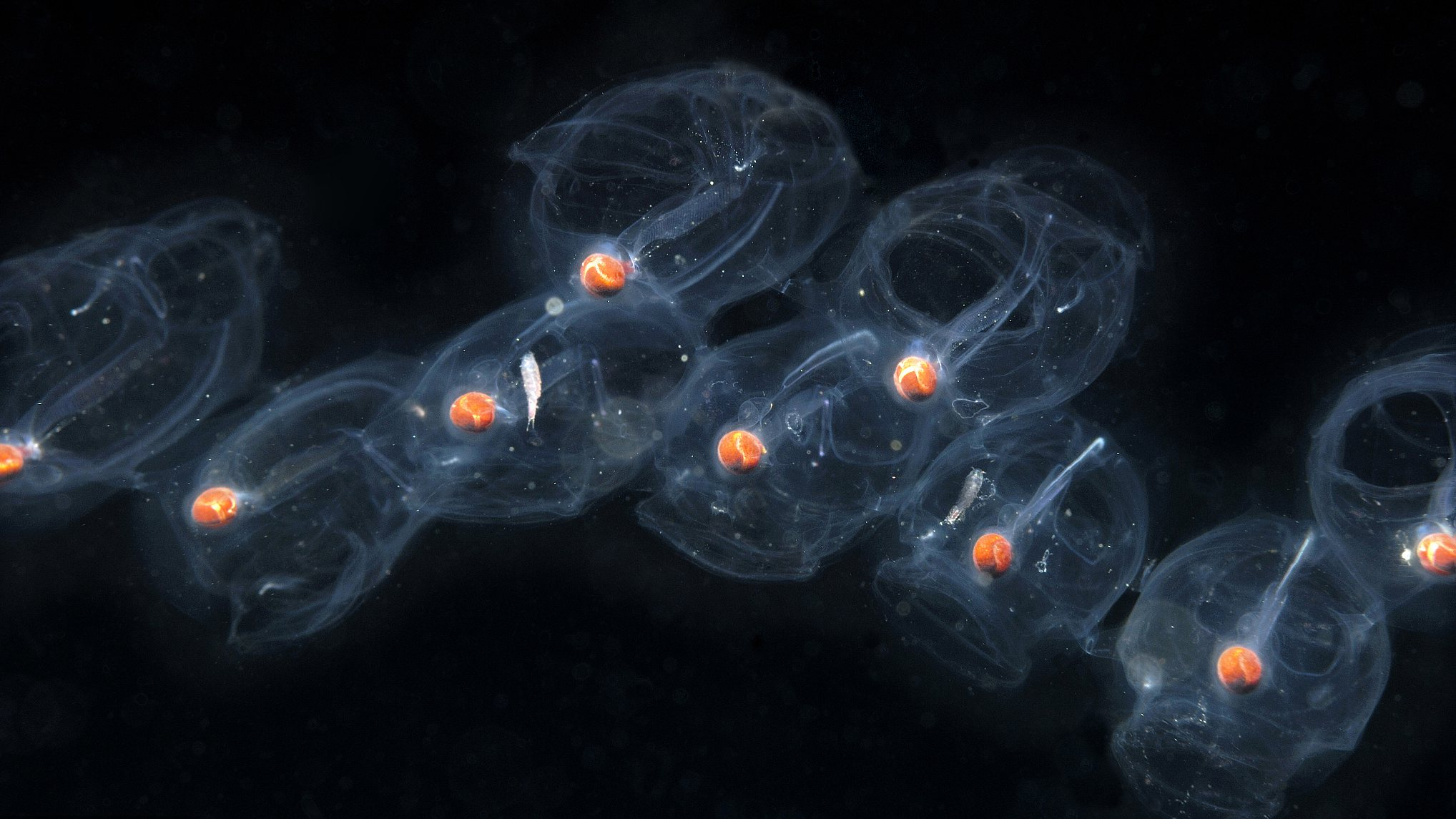
Salps take in carbon when then consume algae. /VCG Photo
Salps take in carbon when then consume algae. /VCG Photo
Another significance characteristic of salps is their effective control of phytoplankton blooms in certain water bodies. When food is abundant, the salp can reproduce at an even faster speed, quickly forming new individuals and absorb more phytoplankton.
(Cover image designed by CGTN's Li Yueyun.)
(If you want to contribute and have specific expertise, please contact us at nature@cgtn.com.)

SITEMAP
Copyright © 2018 CGTN. Beijing ICP prepared NO.16065310-3
Copyright © 2018 CGTN. Beijing ICP prepared NO.16065310-3